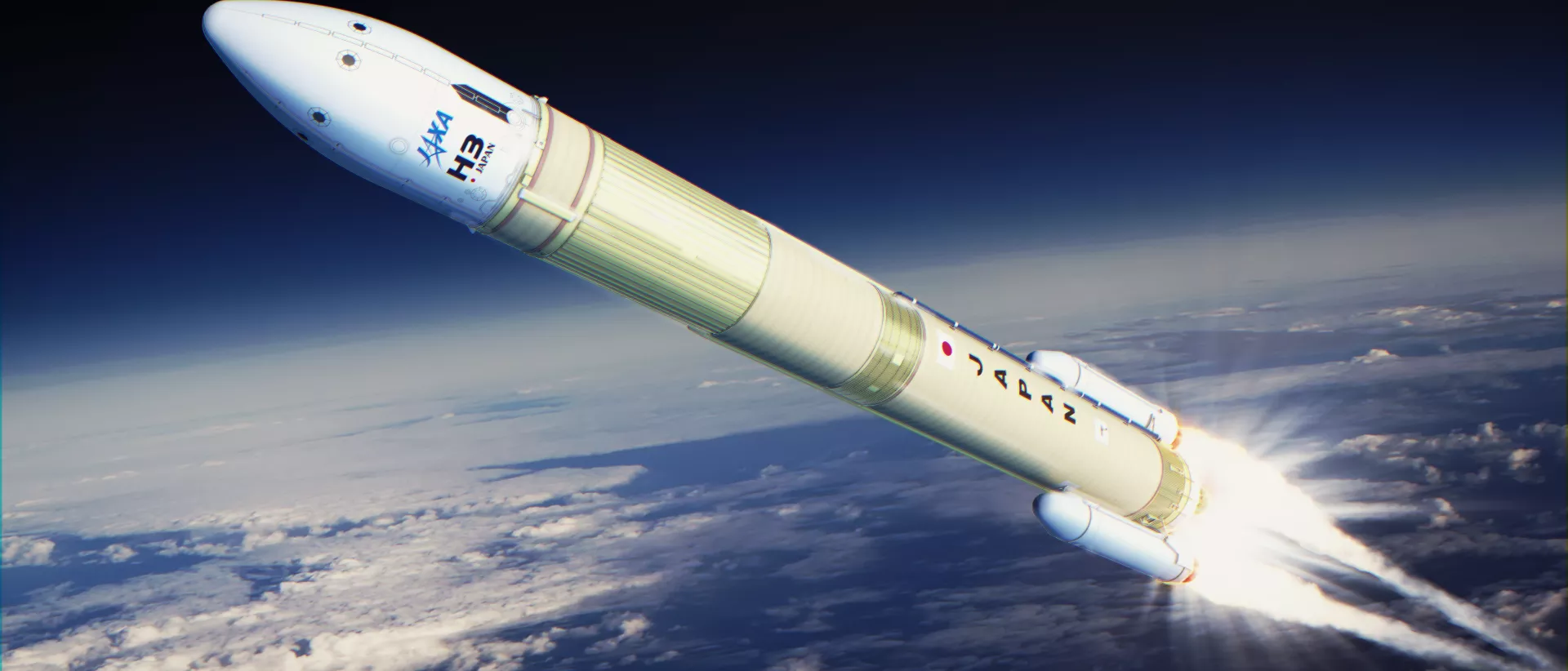
24.10.2025
Beyond Gravity rocket nose cone celebrates premiere on Japan's H3 rocket
On October 26, 2025, an H3 rocket from the JAXA (Japan Aerospace Exploration Agency) Tanegashima Space Center will launch to the International Space Station (ISS). For the first time, it will carry state-of-the-art components from Beyond Gravity, which will make a decisive contribution to the success of the mission.
On October 26, the H3 rocket developed by JAXA and Mitsubishi Heavy Industries (MHI) will lift off from the Tanegashima Space Center in Japan to the International Space Station (ISS). The rocket is loaded with the newly developed HTV-X supply spacecraft, which will transport material to the ISS. Beyond Gravity is involved in this mission with two products, supplying the rocket nose cone, known as the payload fairing, and the support structure inside the rocket. This ensures that the Japanese spacecraft can be flown into space safely and protected from external influences. A total of five flights of the supply spacecraft are planned, for which Beyond Gravity has been selected as the exclusive supplier of the rocket nose cone. The upcoming flight is the first use of the manufactured payload fairing on the H3 and underscores the close technological collaboration between Beyond Gravity, MHI, and JAXA.
Since 2019, Beyond Gravity, a global provider of space technologies headquartered in Zurich, has been working closely with Japanese rocket manufacturer MHI and JAXA – and now an important milestone in the partnership is just around the corner. Stefan Hofmann, Head of the Launchers Division a.i., is looking forward to the upcoming launch and says: "By supplying space technology from Emmen, Beyond Gravity is making an important contribution to the successful implementation of pioneering missions. The first use of our components in the H3 rocket is a significant moment for Beyond Gravity. Our state-of-the-art payload fairing and support structure demonstrate how we are setting new standards in space travel with innovative manufacturing and precision engineering."
Technology from Europe for space launch in Japan
Beyond Gravity is one of only two manufacturers of the H3 rocket nose cone. The company was commissioned exclusively for the HTV-X missions to develop and supply five payload fairings and support structures.
The payload fairing has a diameter of approximately 5 meters and protects the supply spacecraft on its way to the ISS from extreme conditions such as vibrations, noise, and thermal stresses during launch. It is made of a lightweight, high-strength composite material with an aluminum honeycomb core and carbon fiber-reinforced layers. Thanks to a modern production process, Beyond Gravity can manufacture the fairings in a particularly efficient and resource-saving manner. The modular design also allows flexible adaptation to different missions.
The Payload Support Structure (PSS) is a load-bearing structure inside the fairing that ensures that the payload – in this case, the HTV-X spacecraft – is securely fixed during launch. It protects against mechanical stresses and dissipates the forces of the rocket in a targeted manner. The PSS is individually tailored to the respective payload and plays a crucial role in ensuring that it reaches its destination intact.
H3: Japan's new launch vehicle
The H3 rocket is the new flagship of Japanese space travel. Developed by JAXA and MHI, it represents a new generation of cost-efficient and powerful launch vehicles. Its goal is to ensure supplies to the ISS and position Japan as a reliable partner in the international space market.
The HTV-X is the first launch of the new Japanese supply spacecraft to the ISS. It offers around 50% more transport capacity than its predecessors and can take on cargo up to 24 hours before launch – a decisive advantage for temperature-sensitive goods. After its main mission, HTV-X will serve as an autonomous platform for further experiments in orbit for up to 18 months.

